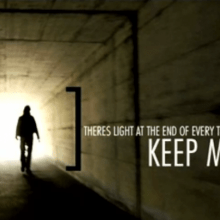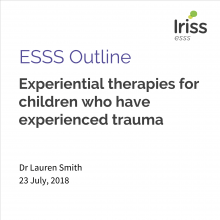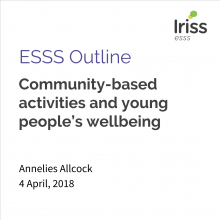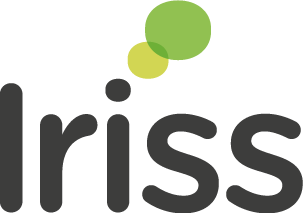We know that creativity can change lives for the better and our aim in conducting the survey was to understand how the creative arts are being used, and the impact this type of work can have for people supported by services and for staff. As such, the purpose of the work was to capture some of the experiential knowledge held by professionals working in this area, to share this knowledge more widely across the sector and to provide inspiration to others.
Headline findings
The following is an overview of the key findings of the research. The findings reflect the experiences and synthesised learning arising from survey responses and follow-up interviews.
- The survey responses have highlighted the extensive breadth and depth of arts activities being delivered to achieve social care outcomes
- The activities provided are highly individual and therefore incorporate a wide range of objectives and actual/expected outcomes for people who use services social care staff and artists
- Activities are provided for and across the complete range of service user groups
- Visual arts and music (including singing) were the most frequently used art forms
- There was an even split of interventions being delivered directly by arts organisations and those delivered by social care organisations (slight majority of arts provision delivered by professional artists or artist organisations 57%)
- Outcomes for people who use services were focused on positive social connections with others, increased self esteem skills and confidence and overall enhanced quality of life
- The main outcomes for social care staff resulting from their involvement in arts activities were similar to that of people who use services. Respondents focused on increased confidence, encouragement to provide support more creatively as well as increased satisfaction from seeing people develop and achieve outcomes
What is the Scottish picture?
Respondents
We had 105 responses to the survey. The majority of responses to the survey came almost equally from third sector (40%) and public sector (36%). There was an even split from the rest of the respondents who described themselves as being either from the health sector, education or (as) sole traders.
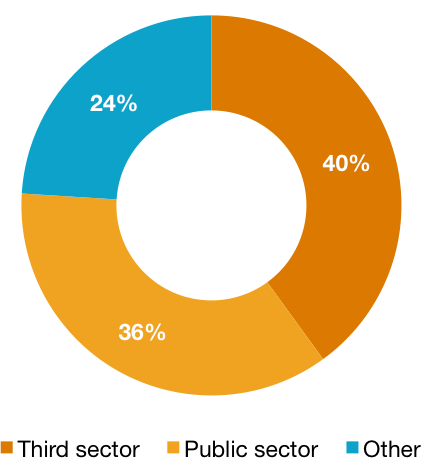
The majority of respondents described themselves in the following categories:
- Arts delivery organisations (46%)
- Social care delivery organisations (35%)
- Workforce development organisations (7%)
- Research organisations (6%)
- Intermediary organisations (5%)
- Parents and carers organisations (1%)
Range of projects/initiatives described through the survey
Responses to the survey were wide and varied and represented the broad gambit of arts interventions in social care settings – from one off initiatives driven from an enthusiastic practitioner through to national large scale funded projects. This indicates the breadth and depth of arts activity that is happening in the social services sector.
Respondents to the survey were often providing a wide range of arts interventions to fulfill social care outcomes. As such, from 105 respondents, there are an approximate total of 300 projects/activity examples drawn from in this survey.
A broad overview of the aims of the different types of projects described includes:
- To support offenders and their families to address offending behaviours
- To reduce social isolation amongst our customers, to give people the chance to be creative and to reduce the stigma associated with dementia
- To build a place to socialise, provide peer support and gain confidence and self-esteem for those in recovery from drug/alcohol use
- To provide a creative, stimulating environment, which is accessible, and barrier free; the programme allows people to express themselves and develop their artistic talent
- To encourage young people to explore their own creative style and taste and to develop a home that they want to look after and live in
- To provide a new leisure activity for children as part of their short break stay
- To develop a choir to engage people with dementia, their families and friends and also to encourage the engagement of volunteers to support the choir (part of the Capacity Building element of the Reshaping Care Fund)
Who is supported by your services?
Overall, the majority of respondents to the survey (55%) did not classify the beneficiaries of their intervention into one specific group. Rather, the majority of projects were delivered with/to a range of people with varying needs. Often these were across the lifespan and were embedded within communities.
From those who were able to identify a specific (client) group (45%), the majority of projects identified related to activities for adults (87%). This was broken down further as follows:
- Those with mental health problems – 13%
- Older people / people with dementia – 31%
- People with learning disabilities – 20%
- Carers and families – 15%
- People who misuse substances – 8%
A flexible approach to the engagement of participants was identified as a key feature of practice from the survey responses. Referral pathways were many and varied and self-referral emerged strongly as an engagement mechanism.
Where are the sessions held?
It was clear from survey responses that many providers delivered projects across a variety of settings depending on the client group or the intervention.
The largest group of projects (44%) was delivered within a community setting, followed by those delivering in a day-care setting (17%). Health settings were mentioned the least (4%).
What type of art form is used primarily?
- Visual arts – 72%
- Music – 53%
- Written word – 40%
- Craft – 46%
- Theatre – 32%
- Dance – 25%
- Film – 18%
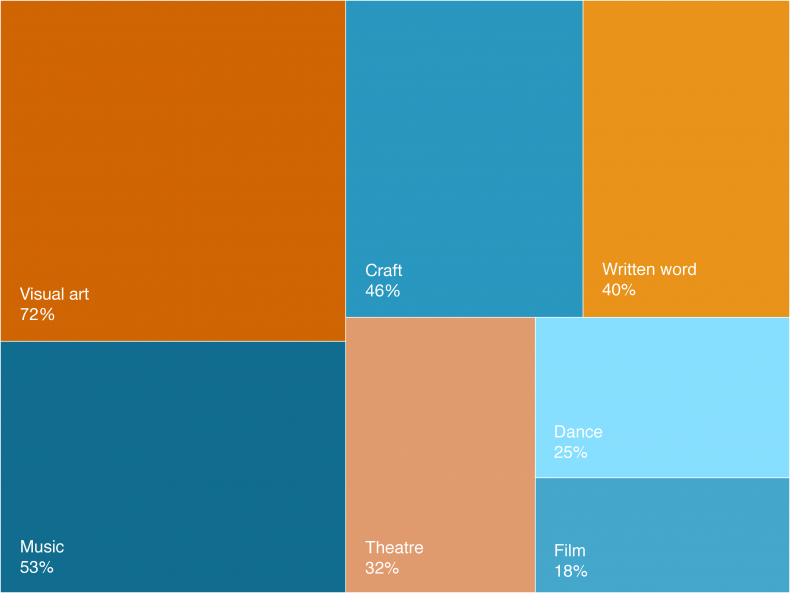
As you will see from above, the visual arts (e.g. painting, drawing, sculpture, photography and film etc.) formed the largest group of projects (72%) followed closely by music and singing (53%).
Approximately 32% of respondents combined one or more art forms as part of their response – and many more indicated their intent to do so.
What are the outcomes?
Increased levels of social contact and social support among marginalised and isolated groups

Increased awareness of skills, activities and behaviours that improve and protect mental wellbeing

Enhanced quality of life including increased self-esteem and confidence

1. Social connections
“Participants who have previously struggled with loneliness suddenly find that they have a new circle of friends.”
It was clear from survey responses that many arts activities, though not all, take place in groups and bring with them social interaction and a sense of inclusion. A feature of many of the arts project activities was the insistence upon mutual exchange, with everyone offering and gaining something from the activity. This was said to offer an equal platform for shared learning through opening up dialogue and prompting new ways of relating to each other.
Increased emotional literacy, resilience and problem solving ability
Developing positive relationships and networks within communities is a vital support to many people and the arts have a track record of helping people do this. From the responses there was not only evidence of connecting similar types of people together, but also a focus on connecting participants into their local communities and linking people into other initiatives or services (including statutory public services, where necessary).
2. Uncovering skills and talents
Realisation that they can do things they didn't think they could, feeling re-energised, noticing more of the world around them
They got to know themselves better with more depth and quality and got clear evidence that they are ok just as they are! Even for a few moments - you can't go back from that.
Involvement in arts activities was said to support people to express or discover facets of their personalities and talents. Respondents commented that arts practice encourages participants to reveal aspects of themselves they would otherwise keep hidden and to express something that is significant and personal. Similarly, because these hidden talents had been explored or identified by the participants themselves, it was said to lead to a greater sense of ownership.
A key finding was that the arts projects offered not only new artistic skills, but also new ways to learn key social and life skills. Respondents highlighted that a key function of the arts is to provide people with accessible ways to achieve concrete goals, often for the very first time. Concentrating on tasks that are enjoyable and involve focused imagination was found to have continuing positive benefits long after the intervention had finished, such as supporting people to examine situations from more than one perspective.
3. Self-esteem and confidence
Many of the respondents described the universal nature of the arts as a means to create a level playing field between people, participants and staff, no matter their age, ability or talent. Removing the pressure from having to have a specific skill (such as reading and writing) was said to help people be free of their judgments of self and of others and could boost self-confidence.
“People get back their self esteem, improving their quality of life and re-integrating into society”
The value in much of the arts activities described by respondents was that the environment that is created is one that is self-exploratory, a safe place where participants can explore themselves and their world away from others’ judgments or other perceived constraints. The creative element of arts practice enables this to happen as people are supported to improve their listening, self-awareness, self esteem and self control.
It is the context of this environment, which supports achievements to be celebrated and any mistakes to be learned from. Sharing and witnessing these experiences with peers and others is a vital part of the support that is provided. Indeed, the survey findings highlighted that involvement in the arts can change hearts and minds of both those being supported by services and those delivering support by increasing reflectiveness, enhancing self-confidence and encouraging the acquisition of transferable skills.
It encourages self-reflection and critical thinking, broadens horizons, encourages individuals to see themselves differently. It can provide the spark that encourages someone to take up learning and embark on a different path.
4. Outcomes focus
Survey respondents frequently noted that the arts are often an effective means to develop trust between practitioner and person, subsequently leading to the effective identification of an individual’s personal outcomes. Although this relationship building requires additional time and patience, respondents suggested that this often then leads to more appropriately aligned care and support.
Similarly, a large proportion of respondents alluded to the fact that the arts support the blurring of the lines between people, sectors and hierarchies, offering a shared experience that can then lead to a new way of thinking, behaving and interacting with one another.
“Having their voices heard.”
Expression of self through art gives voice to what experiences mean for the person, rather than what can be demonstrably highlighted. A focus on shared experience between a practitioner and person who uses services can support those people to be listened to and understood. As such, the arts can provide more effective identification of desired outcomes as well as a means to achieving them.
Outcomes for social services staff
“Felt the pleasure of seeing people grow and develop their talents and confidence as well as building new friendships”
Survey respondents highlighted similar outcomes for staff as had been identified for people who use services.
Fundamentally though, respondents highlighted that the arts intervention/projects had helped social services practitioners to see people who use services in a new light. It helped them both to recognise the gifts and abilities of each other, which was said to often lead to enhanced relationships, as well as the ability to provide more person-centred care to meet people’s needs and aspirations.
Strengths-based practice such as this allows practitioners to feel a sense of achievement, which can have a positive and lasting effect on service development. Similarly, survey respondents also noted that participation and delivery of the arts interventions encouraged social services staff to change their practice, enabling them to consider different methods of engaging with people in a way that made sense to them. Thus, there is some indication that exposure to this way of working encourages staff to provide support, and to think more creatively. As well as linking to job satisfaction, this was also said to contribute to a more pleasurable work environment.
“Impact on the service redesign has been significant so better services more responsive”
Many respondents highlighted that engaging a new activity – arts or otherwise – often supports staff to engage in dialogue with each other, to review and reflect on their own practice. This has often supported staff to encourage, support and motivate one another in practical situations. This time for reflection was said to be a useful process for refreshing perspectives and experiences.
Outcomes for artists
The majority of responses to this question focused on how to bridge the gap between mainstream arts work (with a focus on excellence in product) with social-care settings (which must have a focus on excellence in process). A perceived trade-off between process and quality was often described. However, in follow-up discussions with a range of arts practitioners, there was the suggestion that this dichotomy has actually become artificial in application to social services. Indeed, in all follow-up interviews, practitioners described the ‘quality of experience’ being paramount and noted that this in itself was an interplay between process and product.
Working with the dynamics of diverse groups, either in personality or needs, can be a significant challenge for arts practice. This requires a great deal of skill, dedication, energy and commitment. Many of the specific arts respondents to the survey commented that balancing a degree of structure whilst maintaining a flexible, participant-led, responsive approach was a positive outcome for the artists, which also created ownership for the participant. This flexible working approach was a defining characteristic of participatory arts practice.
“Our artists are developing a number of skills and techniques around facilitating groups which are different to those they would use in other contexts, and this will be a key point of learning around skills and training”
Opportunities and Challenges
Who leads?
The survey highlighted that while many projects are delivered collaboratively by artists and social care staff, a number of social care employers are reliant on identifying and commissioning an artist to deliver an activity with people who use services (78% of activities were delivered by professional artists/arts organisations). Indeed, this was highlighted to be both a positive and a negative thing:
“I think there is a unique dynamic, which comes from bringing in an artist into a care setting. On many occasions I have witnessed the artist stretch the capabilities of the person further than many care staff would try. Within my team I would like to see staff feel more able to take the lead on creative projects themselves but they tend to lack confidence to do this... and don’t think that they are creative themselves…”
“In some instances the learning can be transferred to staff to encourage ongoing support and engagement in this type of activity”
“Mutual learning, the importance of partnership working cannot be underestimated.”
The evidence from the survey suggested that effective arts interventions depend on the quality of partnership, joint working and co-operation between statutory agencies and a wide range of voluntary and community groups. The survey highlighted that the arts provide an opportunity for agencies concerned with the broader determinants of health to work more closely together and to develop alternative responses and sources of support for people. The strongest survey responses tended to have arts practitioners and social care practitioners working together to utilise each others’ key skills and strengths.
As far as possible the arts should emphasise choice, control and options for people who use services. A key asset coming through strongly in the survey was that in the majority of cases, although arts activities would be led by a key practitioner, one of their key activities is to ensure that the resulting programme of work is co-designed by people who use services. Indeed, 18 respondents (17%) highlighted that their activities were often co-led by a person who uses support, a carer, volunteer or peer supporter.
Pointers:
- People who use services should be involved in the design and delivery of arts activities and interventions
- Recognising and drawing on the skills of practitioners from different settings is crucial in achieving outcomes for people
- Supporting people who use services who have previously participated in arts interventions to take a more leading role within projects (as peer support) has been found to be very valuable
Funding
Funding for arts activities to achieve social care outcomes is largely dependent on a mixed model of funding – with support received from a mixture of grant funding, contracts with local authorities and trusts etc. However, this is becoming increasingly less viable, with more and more charitable organisations struggling to secure sustainable funding that will enable the development of new projects or sustaining projects that have been successful. Although public sector funders already invest in the arts, this is invariably through art or cultural programmes, rather than being embedded within social services. The perception from respondents was that this is because social care budgets are often fully committed to meeting existing needs and demands and thus there is limited capacity to invest in new approaches.
Funding is a significant issue for agencies and individuals operating in the field of the arts and social services. The majority of respondents highlighted that funding tends to be short-term, inconsistent or prescriptive (i.e. for a specific 12 week course or for a set group of people). The consensus from participants was that arts interventions work best where the outcomes are sustainable – either through longer term funding, or through their delivery being embedded within the community.
Juggling the demands between fulfilling the funding brief, being responsive to individuals’ needs/wants/outcomes as well as considering the product and process outcomes from the intervention was cited as a challenge in the majority of responses. There was discussion from practitioners that a longer-term strategic approach to funding could ensure the impact of the work is sustained. Indeed, survey respondents also highlighted that creating and maintaining long-term partnerships with key/strategic agencies was an enabler of good practice.
“People willing to invest in new approaches and in building sustainable approaches to creativity is crucial for sustainable arts activity.”
Similarly, in follow up discussions, the move towards Self-Directed Support (SDS) was seen as an opportunity for many, but also a concern for some. The fact that people who use services may ‘vote with their feet’ and use their personal budget to pursue arts activities was a common theme running through responses. However, some respondents were skeptical about whether or not the SDS budgets would be able to stretch as far as to incorporate more ‘quality of life’ pursuits such as the arts. There was a recognition that this would likely play out differently in each local authority area and that the opportunities and challenges of this had yet to be realised in Scotland.
Pointers:
- People who use services should be encouraged to think about the use of the arts as part of their support package
- There is a need to improve understanding about the role of the arts to encourage greater funding of such activities within social services
Evidencing Impact
This survey highlighted that many agencies are grappling with the difficulties of measuring the outcomes that are achieved through the use of different artistic interventions. This was considered to be particularly difficult for arts practice due to the fact that the type of outcomes being delivered by these interventions is difficult to measure (i.e. ‘soft’ outcomes such as increased self-esteem). As such, there was considerable variation regarding the measurement tools used to assess the impact of arts activity on the participants. As a consequence there was a lack of consistency with some methodologies being more rigorous than others.
Respondents highlighted a range of evaluation methodologies and approaches that they were exploring. These included:
- Well-being measurements such as Rosenberg’s self-esteem scale, WEMWEBS etc.
- Participatory evaluation methods – this includes focus groups, peer group evaluation
- Storytelling as a means to enable people who use services to share their experiences and describe the benefit they’ve felt from their involvement
- Social Return on Investment (SROI)
- Many projects hosted reflective sessions for staff to consider what went well and what needed to improve in between different sessions
- A small group of projects had had their project or intervention independently evaluated through independent researchers or through funders
Many respondents highlighted the significant challenges of administering effective evaluation within the very tight resources that are allocated for their involvement (38%). Similarly, another hurdle was perceived to the highly individualised outcomes that were identified by each participant through their support/care plan.
However, significantly, a larger proportion of survey respondents (43%) noted that they’d creatively incorporated outcome setting and measurement within their programme of activity. For instance, increasingly, the onus is on the participants to determine the outcomes and indicators of progress at the outset of their involvement in the project. This co-designed element was considered to be a particular strength of this type of work. This signifies that the role of artists and social care practitioners becomes less about measurement, and more about supporting and understanding methods that can be used to engage and involve people in the service. There remains, however, the need to develop methods for understanding the longer-term outcomes that are achieved in order to understand how the arts can affect wider culture change in our sector.
Pointers:
- There are a range of different creative evaluation tools that are being used to measure effectiveness
- There needs to be some thought put into understanding the longer term outcomes of arts practice
Participation
The first hurdle to participation in arts activities seems to be the individuals themselves. Practitioner responses highlighted that people often feel that they are not artistic or creative enough to attend groups or sessions that are available. This results in difficulties of recruitment and retention of participants.
In addition to this, many respondents were working with groups who have fluctuating conditions (such as mental health issues or dementia), which often meant that participation would vary from session to session depending on how the individuals themselves were feeling. This was said to be problematic in smaller groups.
Often there is the reliance on social services staff to access participants – their enthusiasm and willingness can be a strength or a barrier depending on how committed people are. As such, arts deliverers talked about the lack of commitment and interest from other practitioners/ key workers that may be working with an individual as one of the key factors hindering participation. There was the suggestion from a few respondents that increasing training opportunities for social care staff may improve understanding of the value of the arts amongst the workforce. In addition, making space for social care staff to work more flexibly with people who use services was considered important for them to test out working in a new way.
Pointers:
- Factoring in time for artists to develop the programme of activity and to adapt the design of each session according to the needs of the group is essential. Flexibility is vital.
- The key learning point from this was to provide an open learning environment where artists, staff and people who use services work together to grow and develop.
Promoting challenge
The power of the arts to support organisational change was highlighted in a number of responses. Effectively challenging how an organisation operates was considered to be a key strength of participatory arts practice. However traditional ways of working and mindsets often mean that there are barriers to be overcome when finding new, creative and exciting ways to tackle the problems facing social services.
”The ability to release staff/attract staff to take time out to come to something that is perceived as 'touchy feely'.”
Respondents often highlighted the need for a wider cultural change to support the embedding of arts practice in social care or health organisations. The majority of comments related to this focused on attitudes and perceptions of other people. For instance, there was a sense from some respondents that arts activities could be considered to be an ‘added luxury’ away from the real reason that people are employed to do their job. As such, some respondents highlighted the difficulty in attracting or supporting staff to take time out to do something that wasn’t a prescribed process relating to their work.
Supporting social services staff to move out of their comfort zone and try new approaches in their work was a considerable challenge: however this challenge was not insurmountable. Artist respondents noted that exposure to arts interventions supported social care practitioners to see the benefits. Being able to practically quantify these benefits in a way that could be presented to effectively make the case for this type of work was one of the key ways considered for supporting a change in attitude.
Pointers:
- Support is required to encourage social care staff to recognise and use their own creativity in practice
- Staff can, at times, find this type of practice threatening and as such may require space and time to reflect on their own practice
Balancing Act
Although not a majority finding, it was interesting to note that a few respondents (23%) highlighted the need for effective project management by individuals who understand both the arts world and the social services world. This was often alluded to through comments highlighting the need for sufficient negotiation skills to balance the demands of various competing agendas when working in this way.
For instance, although flexibility is a central feature of artistic practice, many artists commented that it was easy to get trapped into delivering for ‘social care’ outcomes rather than to be specifically focused on the wants/needs of the person or the art form – this was considered to be a difficult juggling act. Similarly when working with a range of different artists there requires sufficient negotiation between their different methods and approaches.
Pointer:
- Effective project management can support partnership working across disciplines
Lessons for workforce development
The survey asked respondents to highlight any key lessons for workforce development for social care practitioners and artists. The following analysis provides an overview of the range of issues and ideas that were contributed. General lessons have been identified as well as those relating to social care staff and artists specifically.
Lessons for artists:
- Artists need to learn how to adjust their approach to various groups of people (recognise triggers that might cause distress)
- Pre-training for artists is essential when working with new groups with specific needs
- Challenging practice and how things are done are important, but this should be done sensitively and through encouraging an open environment where social are practitioners can get involved
- Reflective reporting and support from peers is essential to development of practice
Lessons for social care practitioners:
- Arts activities are most effective when social care practitioners are actively involved and jointly working with the artist; assigning clear roles can assist this process
- Social care practitioners need to develop confidence in their own skills and talents
- Social care practitioners may need time/space for reflection to adapt what they learn to new areas
- Flexibility and letting go of control are key features of practice that will need to be developed
General lessons: working together
- There is a need to encourage more arts practice within the social care system
- Successful partnerships and working together can support the sharing of ideas, good practice and knowledge
- There is a need to encourage people who use services/carers to be involved in arts activities as peer support
- There is a need to formalise the evidence base around arts practice in social care settings so that the value is understood
- Mentoring between artists and social care practitioners can be an effective way to support a change in practice
- Shared reflection can support greater understanding between artists and social care practitioners
The key learning points have been highlighted in this section. Overall, the responses highlighted the need for greater understanding and shared learning between the artist and the social care practitioner. It is suggested that this would improve the general understanding of the role and potential of the arts in application to social services.
In almost all cases, respondents highlighted that a useful element to incorporate in any arts intervention is a space for reflection between artists and social care practitioners for before and after each session. This enabled shared understanding of the objectives of each session as well as consideration of what might need to be adapted.
“Continuing dialogue, discussion and review in practical situations are an effective means by which to encourage and motive staff. Time for research and reflection is also essential to refresh perspectives and experiences.”
“It can be quite an intense experience!”
Working creatively with people with very complex needs or chaotic lives can be incredibly challenging and takes courage, emotional strength and resilience. These qualities cannot be taken for granted and respondents highlight that a key challenge of this way of working is being prepared for the unexpected and how emotional it can become. A theme emerging from responses was ensuring that there was sufficient support for practitioners (artists and social care practitioners alike) to help them to maintain their own personal resilience.
“The sessions are all about sharing and interpersonal relationships, so it's important that participants and leaders are all emotionally safe, monitored and supported”
This opening up of ‘self’ ‘control’ and ‘power’ is new and challenging to some social services practitioners and respondents recounted how creating the space for practitioners to reflect and discuss sessions in advance of and after they’ve taken place can support a change in practice. This was also said to enable the application of these new skills in other areas of work.
Conclusion and references
The arts offer practical, professional and often innovative ways for some social care services to be provided. Rather than identifying people with their needs or current/past behaviour, the arts support people to develop in ways they had perhaps not expected, or even in ways they had thought were impossible.
The use of the arts in social services changes the way organisations and the people within them think about support and how they can help others think about the support that they receive. This change involves the recognition that utilising the ‘expertise’ of people using services (or who may use them) is as important as professional knowledge and experience. As such, although embedding the arts in social care can be challenging, it may support the culture change required for self-directed support and co-production to be realised.
The combination of arts and social services allows practitioners to challenge people’s sense of themselves, their limits and their potential in a very different way to that which is commonly undertaken. Artistic interventions provide a new environment for people to explore their identity, skills and abilities and to build their resilience. By doing this, the arts have the power to support people to develop new skills, improve relationships and to show them a new sense of themselves.
References
- Consilium (2013) What do we know about the role of the arts in the delivery of social care? Evidence review report. Leeds: Skills for Care.
- Matarasso F (1997) Use or Ornament? The Social Impact of Participation in the Arts Available: http://mediation-danse.ch/fileadmin/dokumente/Vermittlung_ressources/Matarasso_Use_or_Ornament.pdf (downloaded September 2013).
- Seligman M (2011) Flourish: A Visionary New Understanding of Happiness and Well-Being. Free Press.
